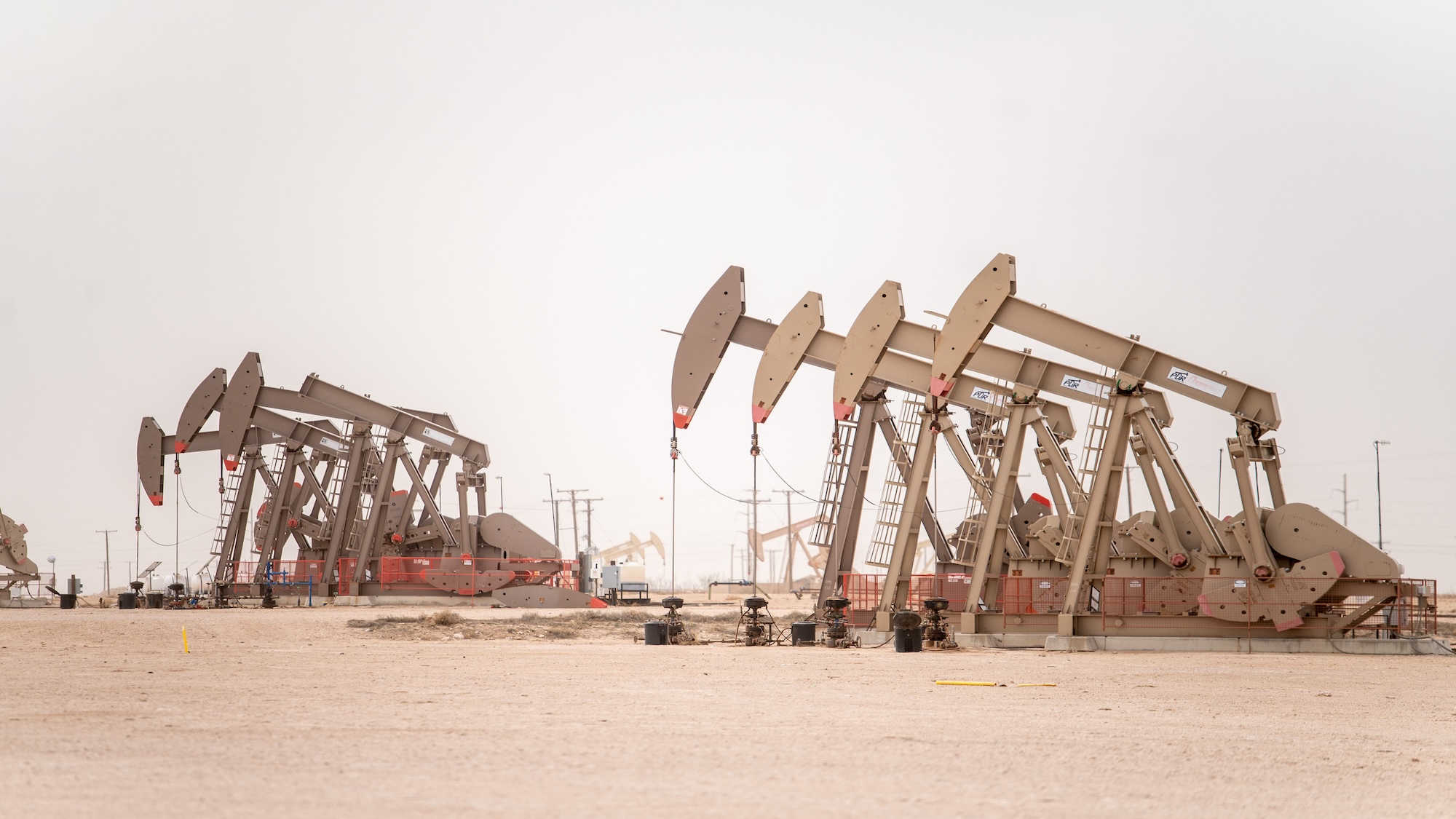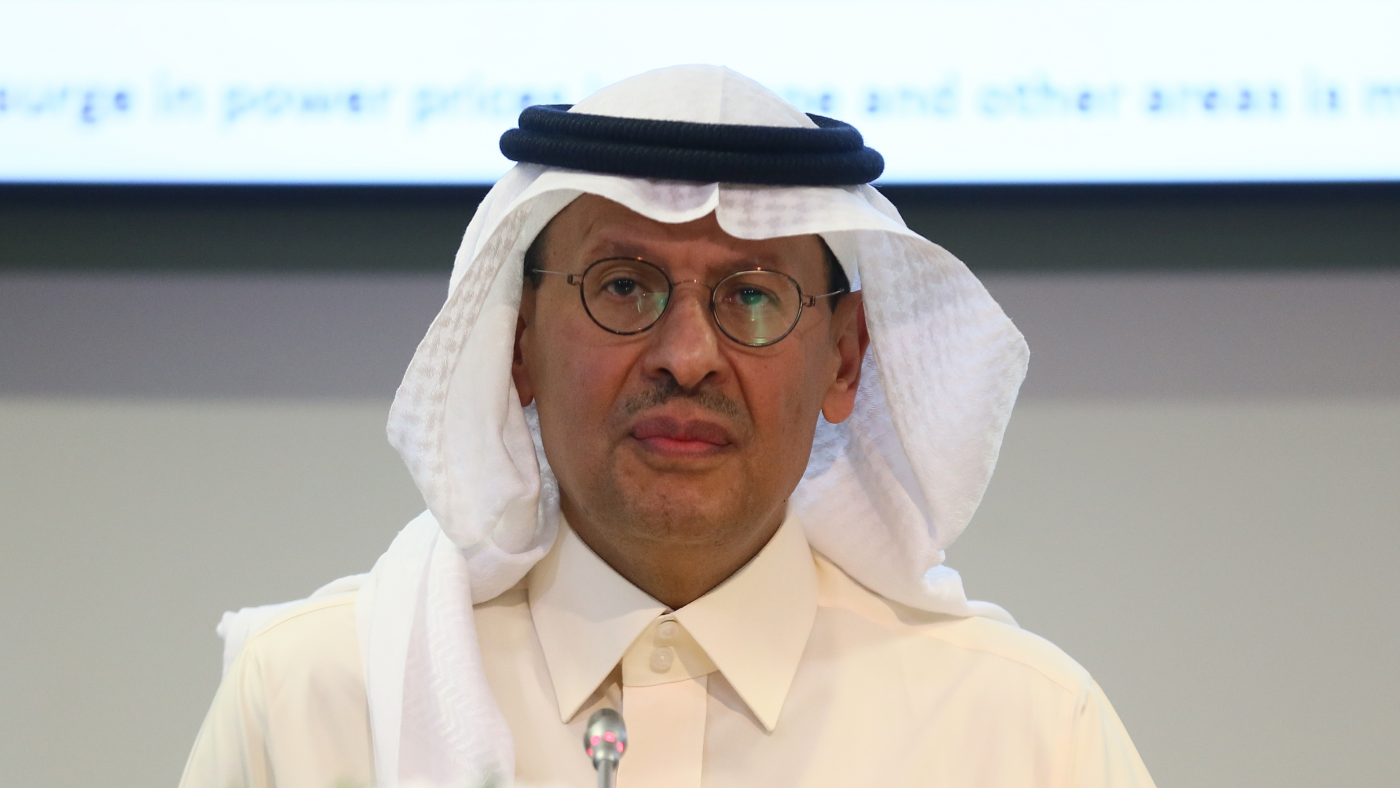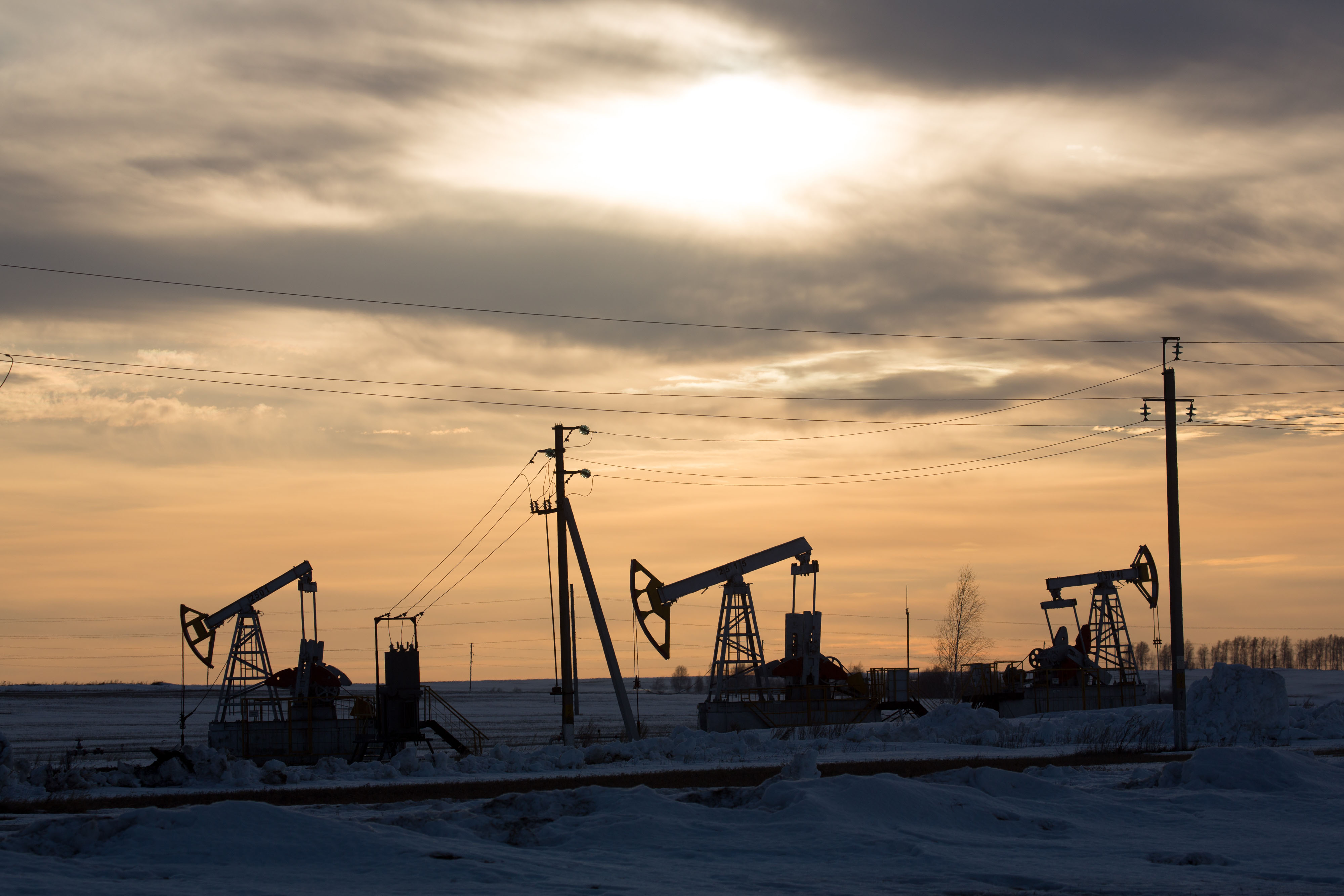Oil price posts two-year highs - but how long can it last?
Brent rose above $59 a barrel this week, its best third-quarter showing since 2004

Oil price: $50 could be 'ceiling' after biggest fall in a year
9 March 2017
Oil inventories in the US are still surging despite compliance with cuts deal.
Oil prices suffered their worst one-day fall for more than a year yesterday and were still tumbling this morning.
The Week
Escape your echo chamber. Get the facts behind the news, plus analysis from multiple perspectives.

Sign up for The Week's Free Newsletters
From our morning news briefing to a weekly Good News Newsletter, get the best of The Week delivered directly to your inbox.
From our morning news briefing to a weekly Good News Newsletter, get the best of The Week delivered directly to your inbox.
One expert reckons the correction, which comes after weeks of relative inertia, proves the bearish case for the commodity and demonstrates that the US oil price could now be contained below $50 a barrel.
West Texas Intermediate, the benchmark price for oil extracted in the US, fell 5.4 per cent to a little above $50 yesterday. Bloomberg says it's its biggest fall since February last year.
By lunchtime in London trading it was down another 1.6 per cent to below $49.45 a barrel.
Brent crude, the international oil price that is the benchmark for oil from the North Sea, fell five per cent yesterday to $53. This morning it fell further to $52.35 a barrel.
A free daily email with the biggest news stories of the day – and the best features from TheWeek.com
The trigger for the losses was the latest weekly report from the US energy regulator, the Energy Information Administration (EIA), which showed a ninth consecutive week of inventory increases of a sizeable 8.2 million barrels.
"The… build boosted total stockpiles, excluding the nation's strategic petroleum reserves, to a fresh record of 528.4 million barrels," says Reuters.
Persistent inventory increases indicate demand is continuing to exceed supply, in the US at least. Anecdotal evidence suggests the story is similar globally.
This in turn implies that the deal to cut 1.8 million barrels a day from output (by Opec and Russia, among others) is not enough to rebalance the market in the context of rising US shale production.
The EIA report shows US output is continuing the steady upward march it has been on since oil broke back above $50 a barrel in December, to 9.1 million barrels a day.
Eugen Weinberg, head of commodities research at Commerzbank, told CNBC that this dynamic, coupled with the fact that exports from Opec have not fallen much despite the production cuts, will constrain prices.
"Compliance within OPEC is less than 50 percent if you exclude Kuwait and Saudi Arabia who cannot shoulder the whole burden over the long-term.
"The export numbers are at the same level as last December which demonstrates that the oil production cut is having little effect on market levels.
"I think $50 per barrel is more likely to be a ceiling than a floor with prices potentially slipping down to $40 this year."
Oil price: North Sea industry 'finally coming up for air'
7 March
North Sea oil is finally "coming up for air", but remains in dire need of capital investment as the oil price remains stubbornly low, a major trade body says.
In its annual state-of-the-industry report, Oil & Gas UK (OGUK) says that firms operating in the North Sea will generate "positive free cash flow" this year for the first time in four years, reports the Financial Times.
Put simply, the industry can expect to make a profit again this year. Even before the 2014 crash, firms were spending more on extracting and transporting the commodity than they were generating in revenue.
The operators had run up "some of the highest operating expenses in the world", says the FT, but the global collapse in oil prices, which began in 2014, forced North Sea firms to slash their costs, with disastrous effects for many working in the industry.
Tough times have led to a more efficient operation, with the average expense of extracting a barrel of oil halving from $29.70 a barrel to $15.30 over the past two years, according to OGUK.
Mike Tholen, economics director of OGUK, told Energy Voice the recovery could not be sustained without capital investment.
He said: "The industry is coming up for air. It's been a hell of a two to three years in terms of pressures. The oil price in particular has put a real strain on companies.
"We've seen some unpleasant consequences for people and their jobs but I think it's a testament to the quality of our industry that many companies are still active and around.
"The challenge for the industry is to build upon the competitiveness it has gained and find ways to win more investment in the UK so we can keep production high, activity strong and prepare for the next phase of the North Sea."
The Daily Telegraph says OGUK's report is a "stark warning" for North Sea oil, with the "green shoots" of recovery masking "record lows for new capital investment" and less being spent on exploring for new oil than ever before.
Last year, only two new field development plans were approved, says the newspaper, and had less than £500m investment committed to them.
Report author Adam Davey told the Telegraph: "A lot of the capital which is being spent within the year is a legacy of projects which were approved between 2011 to 2014, much of which are coming to an end as they begin production.
"It's very important that we plug that gap that those projects will leave with new opportunities. If we don't start to fill that gap by 2020 there will be no new investment coming into the UKCS altogether."
Oil price faces pressure from fast-growing shale sector
6 March
A US shale oil sector that is "expanding faster than the world thought humanely possible" will continue to constrain the oil price, says the Daily Telegraph.
Scott Sheffield, founder of Pioneer Natural Resources, told the paper that the Permian oilfield under west Texas and New Mexico could produce up to seven million barrels a day of crude oil within a decade.
That claim is "broadly" backed up by the latest US geological survey and would mean this single field, one of seven in the US, comfortably surpasses the Ghawar oilfield in Saudi Arabia, the world's largest, with output of five million barrels a day.
In the shorter term, the shale sector continues to confound critics: having dropped to a relatively shallow low of 8.3 million barrels per day last April, production overall is already back above nine million barrels.
US regulator the Energy Information Administration forecasts it will average around that level for the year as a whole, but Sheffield said it could rise to 9.5 million barrels a day and on to 10.5 million by the end of 2018.
"That would overwhelm the 1.8 million barrels per day of cuts agreed by Opec and Russia", which are committed only until this June, says the Telegraph.
Sheffield added: "As long as crude prices are around $50 to $55, we're in the sweet spot. The rig count is going to take off.
"We have had such efficiency gains that break-even costs in the Permian are close to $25. It took us 40 days to drill a well in 2014. We're already down to 20 days."
Oil has been rooted around the early-to-mid $50s since the turn of the year, caught in the dual narratives of falling output from Opec and Russia and fears of rising shale output.
Prices fell slightly overnight while this morning, international benchmark Brent crude was 0.6 per cent down to a little more than $55.50, although that was largely a reaction to China, one of the world's largest markets for oil, revising its growth target lower to 6.5 per cent a year, fuelling concern over underwhelming demand in the coming years.
Oil price edges up after Russian figures dent confidence
3 March
The oil price edged a little higher today, but investor confidence remains dented after it emerged Russia has not cut its production as steeply as hoped.
International benchmark Brent crude was up seven cents on its previous closing price at $55.15 per barrel in early afternoon trading, while its US counterpart, West Texas Intermediate (WTI), had risen by three cents to $52.64.
Today's slight recovery today was boosted by a weaker dollar – oil is traded in the currency so it becomes a more attractive proposition for overseas buyers when the dollar falls.
The dollar slipped from a seven-week high today, says Reuters, in anticipation of a speech by US Federal Reserve chief Janet Yellen.
Oil prices fell by more than two per cent yesterday, largely because of the news that Russia has not cut production as sharply as it had promised to do, adds the news agency.
US stockpiles continuing to expand also had a negative effect, says MarketWatch.
The oil price has recovered consistently in recent months from a cataclysmic slump which began in 2014, with too much of the commodity being produced around the world to keep prices high.
In June 2014, a barrel of crude was $112. By February 2016, it was worth less than $30. But factors such as Canadian wildfires, which hit production, encouraged it to return to $50 per barrel.
Last November, Opec agreed to reduce production by 1.2 million barrels per day in 2017, followed by Russia and other major producers.
Now traders are watching production levels around the world to see if the pledges which have boosted the price materialise.
Oil price is 'well and truly stuck' despite record cuts compliance
28 February
After another advance yesterday that has been erased today, it's clear that the oil price is "well and truly stuck", Saxo Bank's head of commodity strategy Ole Hansen has told Reuters.
Today the oil price dipped by a little more than one per cent. International benchmark Brent crude and its US counterpart West Texas Intermediate were both down a little more than 60 cents to $56.30 and $53.40 a barrel respectively.
The slide follows a rise yesterday – and continues a trend of tight oscillation that has seen oil trade in a "narrow $3 range in recent weeks", says Reuters.
The commodity is caught between two trends. On the plus side is the deal agreed late last year between Opec and other producers including Russia. This involved cutting 1.8 million barrels a day from production in order to help rebalance what was a heavily oversupplied market.
So far the 14-nation Opec cartel is showing "record" adherence to the terms of that deal, with compliance estimated at 90 per cent.
Since the agreement was formalised in December, the oil price has risen about $10. But now the rally has run out of steam, despite the high level of compliance.
On the negative side is the second trend. With the oil price now consistently above $50 a barrel, much of the US shale production that was driven offline over the past two years is profitable again.
In recent weeks, US production has risen back above nine million barrels per day for the first time in 10 months – and the number of active drilling rigs has been on the up for months.
"Oil is well and truly stuck and the falling futures volumes does not indicate that we have much of a bull-bear fight either," says Hansen.
"Having failed on a couple of occasions to break higher it is only natural to see it correct lower. I'm looking for a retracement to $55 on Brent and $52.70 on WTI."
Oil futures trading volumes indicate the level of trading in bets on oil prices being higher or lower in the future. This year, hedge funds and other institutional investors built up a record bet on prices being higher, but experts say that opens up the risk of a sharp fall.
"Increasingly, the high degree of speculative interest is hanging over oil prices like the sword of Damocles," Commerzbank said in a note to clients.
-
 Why are micro-resolutions more likely to stick?
Why are micro-resolutions more likely to stick?In the Spotlight These smaller, achievable goals could be the key to building lasting habits
-
 What will happen in 2026? Predictions and events
What will happen in 2026? Predictions and eventsIn Depth The new year could bring peace in Ukraine or war in Venezuela, as Donald Trump prepares to host a highly politicised World Cup and Nasa returns to the Moon
-
 Why is Trump’s alleged strike on Venezuela shrouded in so much secrecy?
Why is Trump’s alleged strike on Venezuela shrouded in so much secrecy?TODAY'S BIG QUESTION Trump’s comments have raised more questions than answers about what his administration is doing in the Southern Hemisphere
-
 How might the Israel-Hamas war affect the global economy?
How might the Israel-Hamas war affect the global economy?Today's Big Question Regional escalation could send oil prices and inflation sky-high, sparking a worldwide recession
-
 Recent mega-mergers could signal a turning point for the US oil industry
Recent mega-mergers could signal a turning point for the US oil industryTalking Point Both Chevron and Exxon have recently spent billions to acquire smaller oil companies
-
 Has Saudi Arabia lost control of oil prices?
Has Saudi Arabia lost control of oil prices?Today's Big Question Kingdom goes it alone to cut production, risking tension with US and reigniting cooling inflation in Europe
-
 US angered by Opec+ oil cut
US angered by Opec+ oil cutSpeed Read Energy prices to rise further as producers slash supply by two million barrels a day
-
 Global oil demand forecast lowered for 2020 and 2021
Global oil demand forecast lowered for 2020 and 2021Speed Read IEA report says jet fuel demand remains the major source of weakness
-
 Are US-Iran tensions flaring again?
Are US-Iran tensions flaring again?In Depth Trump threatens military action over Twitter
-
 Can a deal be struck to raise oil prices?
Can a deal be struck to raise oil prices?In Depth Opec+ will convene today over video link in a bid to boost crude
-
 What do negative oil prices mean?
What do negative oil prices mean?In Depth Perfect storm of oversupply and storage shortages sees producers paying to get rid of US crude